

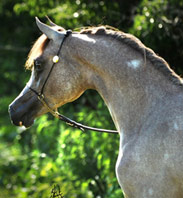
Allesio
the Arabian


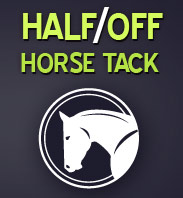
Sponsored Article - Win a $100 Dover Giftcard



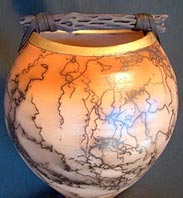
Rob Drexel Horsehair Pottery






Przewalski's Horse
Back to Top | Show all Przewalski's Horse entries...
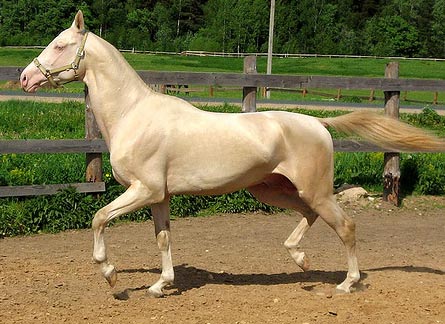
Akhal Teke
The Akhal-Teke, 'Ahalteke' in the Turkmen language, is a breed of horse from Turkmenistan, where they are a national emblem. They are noted for their speed and for endurance on long marches. These horses are famous for those individuals who have a golden buckskin or palomino color with a distinct metallic sheen. However, a number of other colors are recognized, including bay, black, chestnut, palomino, cremello, perlino and grey. The Akhal-Teke's most notable and defining characteristic is the natural metallic bloom of its coat. This is especially seen in the palominos and buckskins, as well as the lighter bays, although some horses "shimmer" more than others. The color pattern is thought to have been used as camouflage in the desert.
Back to Top | Show all Akhal Teke entries...

Andalusian
The Andalusian, also known as the Pure Spanish Horse or PRE (Pura Raza Espanola), is a horse breed developed in the Iberian Peninsula. Similar to the closely related Lusitano, Andalusians are strongly built, compact yet elegant, with long, thick manes and tails. Their most common coat color is gray, although they can be found in many other colors. They are known for their intelligence, sensitivity and docility.
Back to Top | Show all Andalusian entries...

Appaloosa
The Appaloosa is a horse breed known for its preferred leopard-spotted coat pattern and other distinctive physical characteristics. While there is evidence of leopard-spotted horses dating back to the Paleolithic era in Europe, the Nez Perce people of the American Pacific Northwest developed the American breed. They were once referred to by white settlers as the "Palouse horse," possibly after the Palouse River, which ran through the heart of Nez Perce country. Gradually, the name evolved into "Appaloosa." The Nez Perce lost most of their horses following the Nez Perce War in 1877 and the breed fell into decline for several decades. However, a small number of dedicated breeders kept the Appaloosa alive for several decades until a registry was formed in 1938. Today the Appaloosa is one of the most popular breeds in the United States, and it was named the official state horse of Idaho in 1975.
Back to Top | Show all Appaloosa entries...
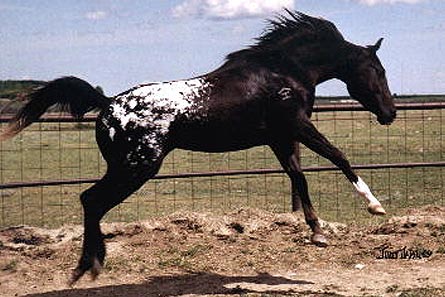
Araappaloosa
The AraAppaloosa, also known as the Araloosa, Arappaloosa and the Ara-Appaloosa, is a horse breed that is a cross between an Arabian horse and an Appaloosa, combining the refined phenotype of the Arabian with the leopard-spotted coloring of the Appaloosa. As both breeds are noted for endurance and intelligence, the resulting cross is usually able to excel at endurance riding as well as other disciplines performed by either breed, including ranch work, and a variety of horse show disciplines. An AraAppaloosa with one purebred Arabian parent may be registered as a half-Arabian with the Arabian Horse Association, and because the Appaloosa breed still has an open stud book to horses of Arabian breeding, many Arappaloosas can also be registered with the Appaloosa Horse Club (ApHC). However, they also have their own organization, the AraAppaloosa and Foundation Breeders' International
Back to Top | Show all Araappaloosa entries...
Ardennais
Back to Top | Show all Ardennais entries...

Arabian
The Arabian or Arab horse is a breed of horse that originated on the Arabian Peninsula. With a distinctive head shape and high tail carriage, the Arabian is one of the most easily recognizable horse breeds in the world. It is one of the oldest horse breeds, with archaeological evidence of horses that resemble modern Arabians dating back 4,500 years. Throughout history, Arabian horses spread around the world by both war and trade, used to improve other breeds by adding speed, refinement, endurance, and strong bone. Today, Arabian bloodlines are found in almost every modern breed of riding horse. The Arabian developed in a desert climate and was prized by the nomadic Bedouin people, often being brought inside the family tent for shelter and protection. This close relationship with humans has created a horse breed that is good-natured, quick to learn, and willing to please. But the Arabian also developed the high spirit and alertness needed in a horse used for raiding and war. This combination of willingness and sensitivity requires modern Arabian horse owners to handle their horses with competence and respect.
Back to Top | Show all Arabian entries...
Azteca
Back to Top | Show all Azteca entries...
Bashkir Curly
Back to Top | Show all Bashkir Curly entries...
Canadian Warmblood
Back to Top | Show all Canadian Warmblood entries...
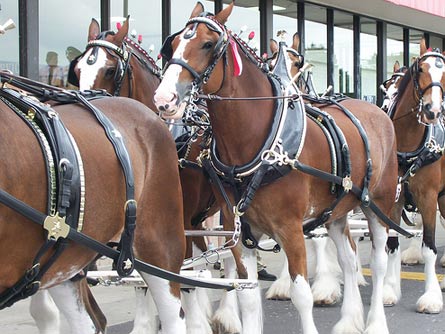
Clydesdale
The Clydesdale is a breed of draft horse derived from the farm horses of Clydesdale, Scotland, and named after that region. Thought to be over 300 years old, the breed was extensively used for pulling heavy loads in rural, industrial and urban settings, their common use extending into the 1960s when they were still a familiar sight pulling the carts of milk and vegetable vendors. They have been exported in the Commonwealth and United States where they are famous for their use as the mascot of various beer brands, including Anheuser-Busch's Budweiser brand, Carlton & United Beverages and several others. At one time there were at least 140,000 Clydesdales known in Scotland; by 1949 just 80 animals were licensed in England and by 1975 the Rare Breeds Survival Trust had listed the breed as "vulnerable". Clydesdales have since seen resurgence in popularity and population, resulting in the breed's status being reclassified favorably as "at risk" with an estimated global population of just 5,000 individuals. Clydesdales are now most numerous in the United States where recently over 600 foals are reportedly born each year.
Back to Top | Show all Clydesdale entries...
Connemara Pony
Back to Top | Show all Connemara Pony entries...
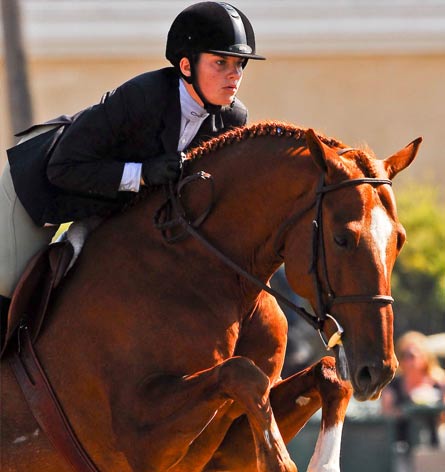
Czech Warmblood
The Czech Warmblood was in existence by the time of the Austria-Hungary Empire (1876-1918). In the 19th century the breed was influenced by Spanish and Italian horses, and later by breeds such as the Furioso, Gidran, Nonius and Przedswit breeds. German Warmblood horses also played a part.
Back to Top | Show all Czech Warmblood entries...
Dales Pony
Back to Top | Show all Dales Pony entries...
Dartmoor Pony
Back to Top | Show all Dartmoor Pony entries...
Donkey
Back to Top | Show all Donkey entries...
Dutch Warmblood
Back to Top | Show all Dutch Warmblood entries...
Fox Trotter
Back to Top | Show all Fox Trotter entries...
Georgian Grande
Back to Top | Show all Georgian Grande entries...
German Riding Pony
Back to Top | Show all German Riding Pony entries...

Friesian
The Friesian (also Frisian) is a horse breed originating in Friesland, a province of the Netherlands. Although the breed's conformation resembles that of a light draft horse, Friesians are graceful and nimble for their size. During the Middle Ages, it is believed that the ancestors of Friesian horses were in great demand as war horses throughout continental Europe. Through the Early Middle Ages and High Middle Ages, their size enabled them to carry a knight in armor. In the Late Middle Ages, heavier, draft type animals were needed. Though the breed nearly became extinct on more than one occasion, the modern day Friesian horse is growing in numbers and popularity, used both in harness and under saddle. Most recently, the breed is being introduced to the field of dressage.
Back to Top | Show all Friesian entries...
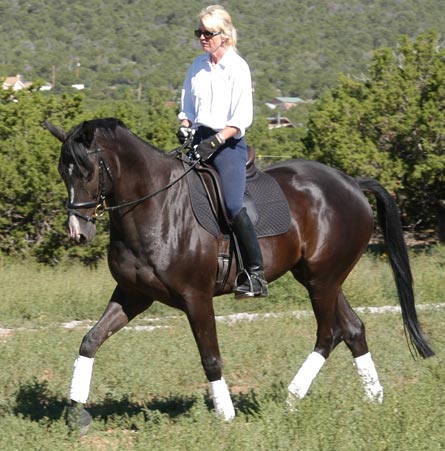
German Warmblood
German Warmblood may refer generally to any of the various warmblood horses of Germany, or more specifically to a warmblood registered with the nation-wide German Horse Breeding Society. Beneath the umbrella term German warmblood are several regional variations on a singular standard; individual German warmblood types are not necessarily considered "breeds", because they have an open stud book and freely exchange genetic material between each other, with other warmblood types, with Anglo-Arabians, and with breeds like the Thoroughbred, Arabian, and Trakehner.
Back to Top | Show all German Warmblood entries...
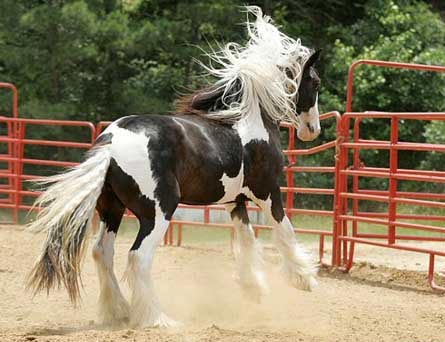
Gypsy Vanner
The Gypsy Vanner, also known as a Gypsy Cob (USA and UK), Coloured Cob (UK), Irish Cob, or "Tinker Horse", is a breed of horse which is usually of Tobiano coloring and has many draft horse characteristics. There is no exact known history of the Gypsy Cob. It is believed that the Gypsy Cobs are descended from a combination of Shires, Clydesdales, Friesians, and Dales Ponies with their origins in the United Kingdom and Ireland.
Back to Top | Show all Gypsy Vanner entries...
Hackney
Back to Top | Show all Hackney entries...
Half-Arabian
Back to Top | Show all Half-Arabian entries...
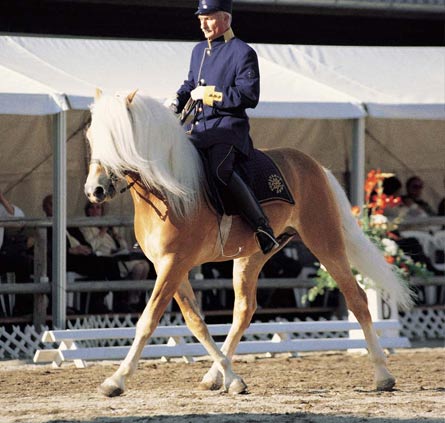
Haflinger
The Haflinger, also known as the Avelignese, is a breed of horse developed in Austria and northern Italy during the late 1800s. There are several theories as to this breed's origin, but its current conformation and appearance are the result of infusions of Arabian and various European breeds' blood into the original native Tyrolean ponies. Haflinger horses are relatively small, are always chestnut in color, and have distinctive gaits described as energetic but smooth. The breed is well-muscled, but with an elegant appearance. Haflingers have many uses, including light draft and harness work as well as various under-saddle disciplines such as endurance riding, dressage, equestrian vaulting and therapeutic riding programs. The World Haflinger Federation (WHF) is the international governing body that controls breed standards for the Haflinger. The WHF is made up of a confederation of 22 national registries, and helps to set breeding objectives, guidelines and rules for its member organizations.
Back to Top | Show all Haflinger entries...
Hanoverian
Back to Top | Show all Hanoverian entries...
Holsteiner
Back to Top | Show all Holsteiner entries...

Icelandic
The Icelandic horse is a breed of horse developed in Iceland. Although the horses are small, at times pony-sized, most registries for the Icelandic refer to it as a horse. Icelandic horses are late-developers, but are also long-lived and hardy. In their native country they have few diseases; Icelandic law prevents horses from being imported into the country and exported animals are not allowed to return. The Icelandic displays two gaits in addition to the typical walk, trot, and canter/gallop commonly displayed by other breeds. The only breed of horse in Iceland, they are also popular internationally, and sizable populations exist in Europe and North America. The breed is still used for traditional farm work in its native country, as well as for leisure, showing, and racing.
Back to Top | Show all Icelandic entries...

Kentucky Mountain Horse
The Kentucky Mountain Saddle Horse is a gaited breed of horse developed in eastern Kentucky. They are a medium-sized horse used mainly for under-saddle work. These saddle horses were originally bred by the mountain people of the hills and valleys of eastern Kentucky for the demanding needs of farm life. It was an obscure breed until it became noticed in the late 1980s. Since then, these horse have become highly sought after as pleasure horses in Kentucky and the rest of the world. They are highly prized for their easy-going temperament, intelligence, versatility, willingness, and especially their smooth and natural 4-beat gait.
Back to Top | Show all Kentucky Mountain Horse entries...
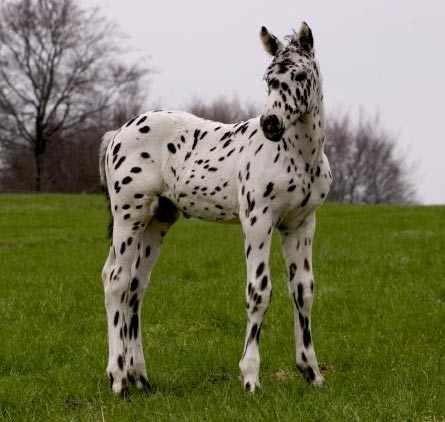
Knabstrupper
The Knabstrup or Knabstrupper is a European horse breed with an unusual range of coat coloration. It shows the same color pattern as the Appaloosa, with coat patterns ranging from solid, through many variants to the full leopard spotted. Leopard Spotting is the most prized color pattern. It has warmblood conformation.
Back to Top | Show all Knabstrupper entries...
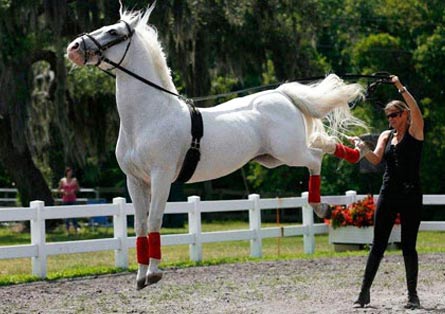
Lipizzan
The Lipizzan or Lipizzaner, is a breed of horse closely associated with the Spanish Riding School of Vienna, Austria where the finest representatives demonstrate the haute ecole or "high school" movements of classical dressage, including the highly controlled, stylized jumps and other movements known as the "airs above the ground." The Lipizzan breed dates back to the 16th century, when it was developed with the support of the Habsburg nobility. The breed takes its name from one of the earliest stud farms established, located near the Kras village of Lipica (spelled "Lipizza" in Italian), in modern-day Slovenia.
Back to Top | Show all Lipizzan entries...
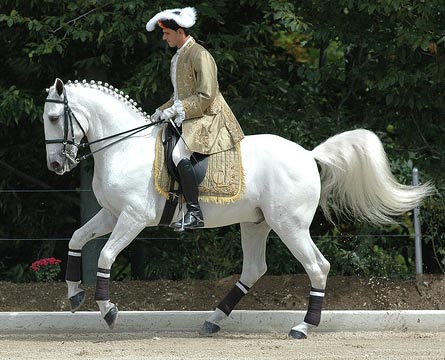
Lusitano
The Lusitano is an ancient Portuguese horse breed, closely related to the Spanish Andalusian horse. Both are sometimes called Iberian horses, as they originated from the Iberian peninsula. They were developed for military purposes, and later used for dressage and bull fighting. In America, Lusitanos and Andalusians are registered together under the International Andalusian and Lusitano Horse Association.
Back to Top | Show all Lusitano entries...
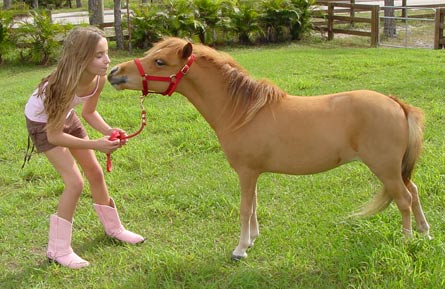
Miniature
Miniature horses are found in many nations, particularly in Europe and the Americas. The designation of miniature horse is determined by the height of the animal, which, depending on the particular breed registry involved, is usually less than 34–38 inches (86–97 cm) as measured at the last hairs of the mane, which are found at the withers. While miniature horses are the size of a very small pony, many retain horse characteristics and are considered "horses" by their respective registries. They have various colors and coat patterns.
Back to Top | Show all Miniature entries...
Mixed Breed
Back to Top | Show all Mixed Breed entries...
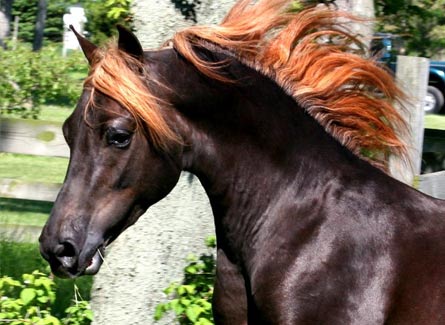
Morgan
The Morgan is one of the earliest horse breeds developed in the United States. Tracing back to the stallion Figure, later named Justin Morgan after his best-known owner, the breed excels in many disciplines, and is known for its versatility. The Morgan horse is compact and refined in build, with strong limbs, an expressive face, large eyes, well-defined withers, laid back shoulders and a well arched neck and a clean cut head. There is officially one Breed Standard for Morgan type regardless of the discipline or bloodline of the individual horse.
Back to Top | Show all Morgan entries...
Mule
Back to Top | Show all Mule entries...
Mustang
Back to Top | Show all Mustang entries...
National Show Horse
Back to Top | Show all National Show Horse entries...
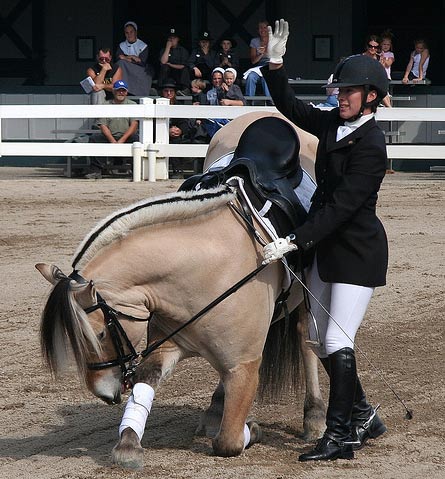
Norwegian Fjord
The Fjord horse or Norwegian Fjord Horse (known in Norway as a Fjording or Fjordhest) is a relatively small but very strong horse breed from the mountainous regions of Western Norway. It is an agile breed of light draft horse build. All Fjords are dun in color, with five variations in shade recognized by their breed registries. One of the world's oldest breeds, it has been used for hundreds of years as a farm horse in Norway, and in modern times is popular for its generally good temperament. It is used both as a harness horse and under saddle.
Back to Top | Show all Norwegian Fjord entries...
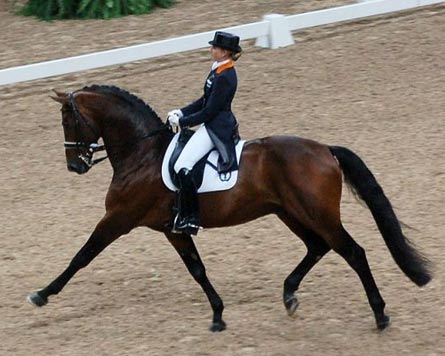
Oldenburg
The Oldenburg is a warmblood horse from the north-western corner of Lower Saxony, what was formerly the Grand Duchy of Oldenburg. The breed was built on a mare base of all-purpose farm and carriage horses, today called the Alt-Oldenburger. The modern Oldenburg is managed by the Association of Breeders of the Oldenburger Horse, which enacts strict selection of breeding stock to ensure that each generation is better than the last. Oldenburgers are tall sport horses with excellent gaits and jumping ability. The breeding of Oldenburg horses is characterized by very liberal pedigree requirements and the exclusive use of privately-owned stallions rather than centralization around a state-owned stud farm.
Back to Top | Show all Oldenburg entries...
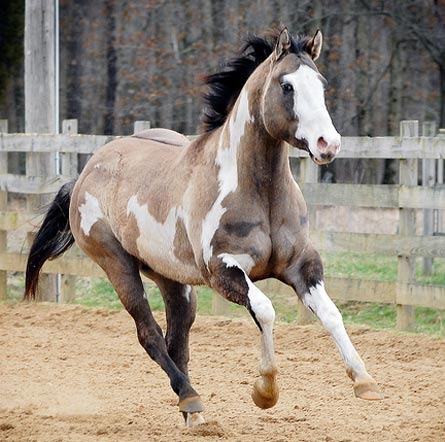
Paint
The American Paint Horse is a breed of horse that combines both the conformational characteristics of a western stock horse with a pinto spotting pattern of white and dark coat colors. Developed from a base of spotted horses with Quarter Horse and Thoroughbred bloodlines, the American Paint Horse Association (APHA) breed registry is now one of the fastest-growing in North America. The registry allows some non-spotted animals to be registered as "breeding stock Paints," and considers the American Paint Horse to be a horse breed with distinct characteristics, not merely a color breed.
Back to Top | Show all Paint entries...
Palomino
Back to Top | Show all Palomino entries...
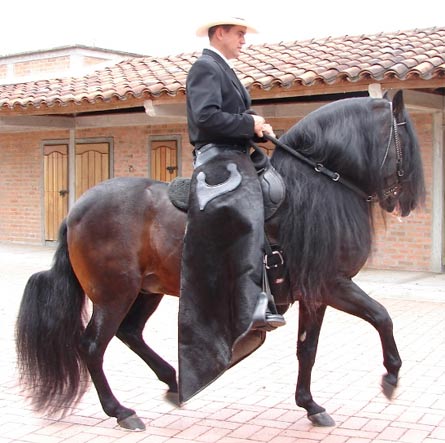
Paso Fino
The Paso Fino is a naturally-gaited light horse breed dating back to horses imported to the Caribbean from Spain. Pasos are prized for their smooth, natural, four beat, lateral ambling gait and are used in many disciplines, but are especially popular for trail riding. I
Back to Top | Show all Paso Fino entries...
Pony
Back to Top | Show all Pony entries...
Pinto
Back to Top | Show all Pinto entries...
Pony of the Americas
Back to Top | Show all Pony of the Americas entries...
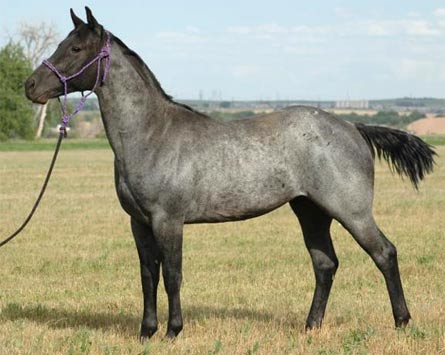
Quarter Horse
The American Quarter Horse is an American breed of horse that excels at sprinting short distances. Its name came from its ability to outdistance other breeds of horses in races of a quarter mile or less; some individuals have been clocked at speeds up to 55 mph (88.5 km/h). The American Quarter Horse is the most popular breed in the United States today, and the American Quarter Horse Association is the largest breed registry in the world, with over 4 million American Quarter Horses registered. The American Quarter Horse is well known both as a race horse and for its performance in rodeos, horse shows and as a working ranch horse. The compact body of the American Quarter Horse is well-suited to the intricate and speedy maneuvers required in reining, cutting, working cow horse, barrel racing, calf roping, and other western riding events, especially those involving live cattle. The American Quarter Horse is also shown in English disciplines, driving, and many other equestrian activities.
Back to Top | Show all Quarter Horse entries...
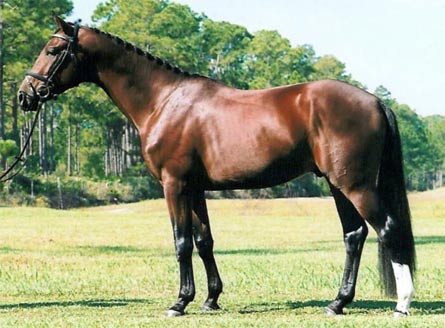
Rheinland-Pfalz-Saar
Back to Top | Show all Rheinland-Pfalz-Saar entries...
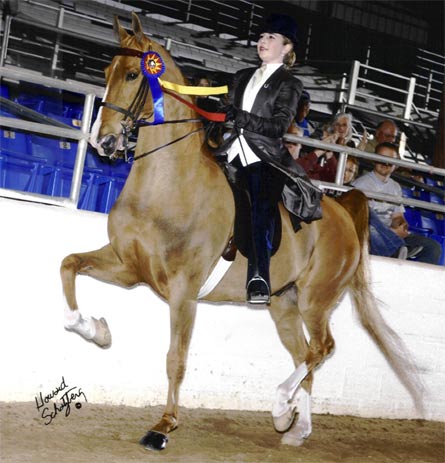
Saddlebred
The American Saddlebred, formerly known as the American Saddle Horse, is a breed of horse that was developed in Kentucky by plantation owners. Today, in the horse show world, they are most commonly seen under saddle in Saddle seat style riding, and in various types of driving, including pleasure driving and various types of fine harness competition. They are also occasionally seen in other disciplines including dressage, hunter/jumper, and western riding. They also are popular parade mounts and used for trail riding due to their comfortable gait and steady temperament.
Back to Top | Show all Saddlebred entries...
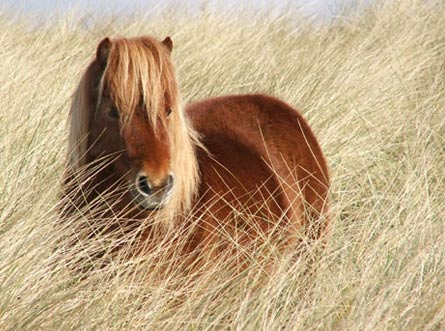
Shetland Pony
The Shetland pony is a breed of pony originating in the Shetland Isles. Shetlands range in size from a minimum height of approximately 28 inches to an official maximum height of 42 inches (10.2 hands, 107 cm) at the withers. (11.2 hands for American Shetlands) Shetland ponies have heavy coats, short legs and are considered quite intelligent. They are a very strong breed of pony, used for riding, driving, and pack purposes.
Back to Top | Show all Shetland Pony entries...
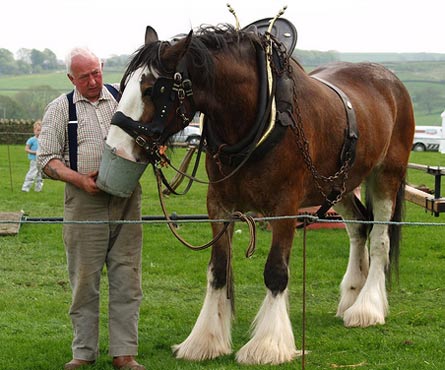
Shire
The Shire horse is a breed of draught horse or draft horse. The breed comes in many colors, including black, bay and gray. They are a tall breed, with mares standing 16 hands (64 inches, 163 cm) and over and stallions standing 17 hands (68 inches, 173 cm) and over. The breed has an enormous capacity for weight pulling, and Shires have held the world records for both largest overall horse and tallest horse at various times. Throughout its history, the breed has been popular for pulling brewery wagons that delivered ale to customers. This practice continues today, with the breed also being used for forestry, leisure and promotional pursuits.
Back to Top | Show all Shire entries...
Spanish Mustang
Back to Top | Show all Spanish Mustang entries...
Tennessee Walking Horse
Back to Top | Show all Tennessee Walking Horse entries...
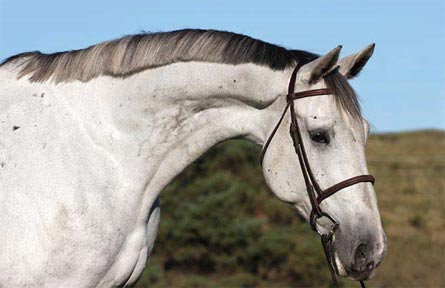
Thoroughbred
The Thoroughbred is a horse breed best known for its use in horse racing. Although the word "thoroughbred" is sometimes used to refer to any breed of purebred horse, it technically refers only to the Thoroughbred breed. Thoroughbreds are considered a "hot-blooded" horse, known for their agility, speed and spirit. The Thoroughbred as it is known today was first developed in 17th and 18th century England, when native mares were crossbred with imported Arabian stallions. All modern Thoroughbreds can trace their pedigrees to three stallions originally imported into England in the 1600s and 1700s, and to 74 foundation mares of English and Oriental (Arabian, Turkoman or Barb) blood. During the 1700s and 1800s, the Thoroughbred breed spread throughout the world; they were imported into North America starting in 1730 and into Australia, Europe, Japan and South America during the 1800s. Millions of Thoroughbreds exist worldwide today, with over 118,000 foals registered each year worldwide. Thoroughbreds are used mainly for racing, but are also bred for other riding disciplines, such as show jumping, combined training, dressage, polo, and fox hunting. They are also commonly cross-bred with other breeds to create new breeds or to improve existing ones, and have been influential in the creation of many important breeds, such as the Quarter Horse, the Standardbred, the Anglo-Arabian, and various Warmblood breeds.
Back to Top | Show all Thoroughbred entries...
Trakehner
Back to Top | Show all Trakehner entries...
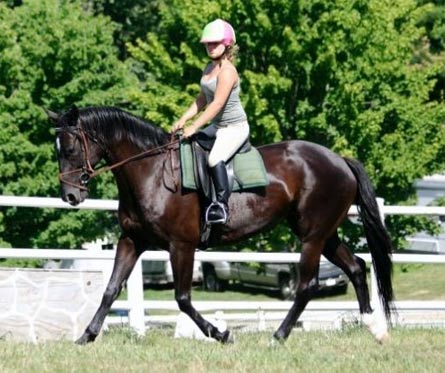
Warmblood
Warmbloods are a group of middle-weight horse types and breeds, primarily originating in Europe, registered with organizations that are characterized by open studbook policy, studbook selection, and the aim of breeding for equestrian sport. The term distinguishes these horses from both heavy draft horses ("cold bloods") and refined light saddle horses such as the Thoroughbred and Arabian ("hot bloods"). Though modern Warmbloods are descended from heavier agricultural types systematically upgraded by hotblood influence, the term does not imply that Warmbloods are direct crosses of "cold" and "hot".
Back to Top | Show all Warmblood entries...
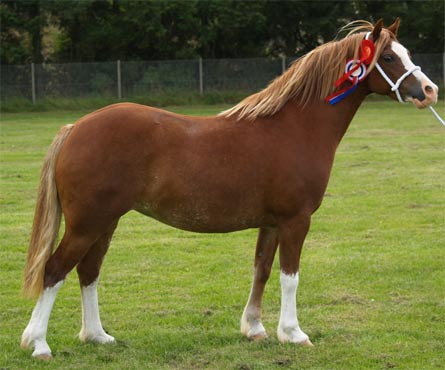
Welsh Pony
The Welsh Pony is a breed of pony that originated in Wales in the United Kingdom. The breed registries for the Welsh pony has four sections, primarily distinguished by height, but also by minor variations in type: the Welsh mountain pony (Section A), the Welsh pony (Section B), the Welsh pony of cob type (Section C), and the Welsh Cob (Section D). Welsh ponies are known for their good temperament, hardiness, and free-moving gaits.
Back to Top | Show all Welsh Pony entries...
Westphalian
Back to Top | Show all Westphalian entries...
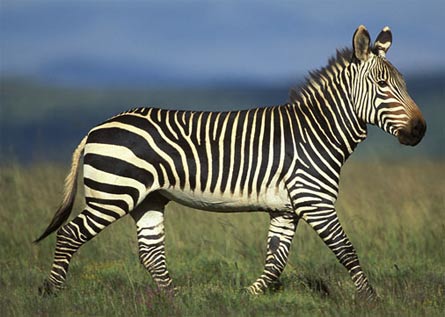
Zebra
Zebras are African equids best known for their distinctive white and black stripes. Their stripes come in different patterns unique to each individual. They are generally social animals and can be seen in small harems to large herds. In addition to their stripes, zebras have erect, mohawk-like manes. Unlike their closest relatives, horses and asses, zebras have never been truly domesticated. There are three species of zebra: the Plains Zebra, Grévy's Zebra and the Mountain Zebra. The Plains zebra and the Mountain zebra belong to the subgenus Hippotigris, but Grevy's zebra is the sole species of subgenus Dolichohippus. The latter resembles an ass while the former two are more horse-like. Nevertheless, DNA and molecular data show that zebras do indeed have monophyletic origins. All three belong to the genus Equus along with other living equids. In certain regions of Kenya, Plains zebras and Grevy's zebras coexist.
Back to Top | Show all Zebra entries...















